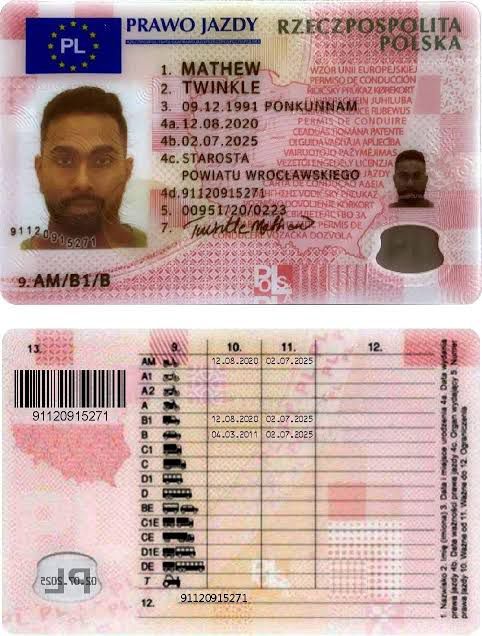The Ultimate Glossary On Terms About Driving License Learning Online
Driving License Learning Online: A Comprehensive Guide
In today's busy world, the necessity of having a driving license can not be ignored. The age of digitalization has transformed the way individuals can prepare for their driving tests. Online learning platforms now use a practical and effective means of acquiring important knowledge and abilities needed to pass the driving test. This post will explore the numerous elements of driving license learning online, including its benefits, how it works, and what to expect.
The Evolution of Driving License Education
Traditionally, acquiring a driving license involved going to physical classroom sessions alongside behind-the-wheel training. Students needed to handle traveling to classes and getting practical experience, which could be both lengthy and difficult. However, the intro of online learning has actually revolutionized this process, making it more accessible and flexible.
Benefits of Learning to Drive Online
Learning to drive online offers many advantages, including:
- Flexibility: Learners can prepare for their tests at their own rate and convenience, without the stiff scheduling normally related to traditional classes.
- Cost-Effectiveness: Online courses frequently come at a lower expense compared to in-person guideline, making it an appealing option for many.
- Access to Resources: Comprehensive online courses often include simulations, quizzes, and instructional videos that improve the learning experience.
- Updated Information: Online materials are often upgraded more routinely, making sure learners receive the most existing information on traffic laws and policies.
- Self-Paced Learning: Students can examine sections they find hard and progress through the product as they master each topic.
How Online Driving Education Works
Most online driving courses are structured to offer a thorough learning experience. Below are the normal parts of an online driving course:
1. Register in a Course
- Trainees select an online driving school that matches their needs and register for a course.
2. Access Study Materials
- Upon registration, learners access to a portal including study materials, consisting of multimedia material, practice tests, and resources on state-specific traffic laws.
3. Research Study and Complete Instructional Modules
- Courses are broken down into modules that learners must finish. Lots of platforms use video lectures, interactive tests, and reading products.
4. Take Practice Tests
- Many online learning platforms supply chances to take practice tests, mimicking the real composed driving test. This assists students gauge their preparedness for the genuine exam.
5. Behind-the-Wheel Training
- While online courses concentrate on theoretical knowledge, trainees will still need practical driving practice. Most platforms suggest partnering with an experienced chauffeur or registering in a local driving school for hands-on training.
6. Arrange the Driving Exam
- Once students feel great in their knowledge and skills, they can schedule a visit for the written and driving tests with their local automobile department.
Table: Comparison of Online vs. Traditional Driving Learning
Function
Online Driving Courses
Traditional Driving Schools
Flexibility
High (study at own speed)
Limited (fixed class schedule)
Cost
Usually lower
Typically higher
Learning Format
Self-directed multimedia
Instructor-led lectures
Research study Materials
Upgraded routinely
May not reflect the current laws
Behind-the-Wheel Guidance
Needs external arrangements
Included in the bundle
What to Expect from Online Driving Courses
While each online driving course might differ, students can normally expect the following:
- Comprehensive Curriculum: Courses cover necessary topics such as traffic laws, roadway indications, safe driving practices, and defensive driving techniques.
- Interactive Learning: Many online courses execute gamification techniques to make learning enjoyable and engaging.
- Assistance: A trusted online driving school should supply access to instructors through e-mail, chat, or phone for additional assistance.
Regularly Asked Questions (FAQs)
1. Is online driving education recognized by all states?
While many states accept online driving courses for the written part of the exam, regulations might vary when it comes to the behind-the-wheel training. It is essential for students to confirm their state's particular requirements.
2. Can I discover to drive without a physical class?
Yes, you can finish the theoretical part of driving education totally online; however, practical driving lessons with a knowledgeable grownup or a licensed instructor are essential.
3. Are online driving tests the like in-person tests?
The format of online practice tests typically looks like the real tests, but they might not always correspond the state-specific driving examinations. However, they serve to familiarize learners with the test structure and material.
4. Is online driving education ideal for any age groups?
Yes, online driving education is accessible and helpful for students of all ages, whether young people getting ready for their very first driving test or older adults looking for to revitalize their abilities.
5. What occurs if I fail the online practice tests?
Stopping working a practice test is common and shouldn't discourage students. A lot of online courses permit unrestricted efforts to retake tests and tests up until a passing grade is accomplished.
Learning to drive online presents a feasible alternative for many people wanting to obtain their driving license in a versatile and cost-effective way. With the development of online education, individuals can now get ready for their driving tests with ease and confidence. As learners navigate this self-paced journey, they can gain from comprehensive resources, engaging material, and the benefit of handling their own schedules. Ultimately, whether choosing kupić fałszywe dokumenty tożsamości z dostawą or a conventional technique, the key remains the dedication to safe driving practices and compliance with regional policies.
